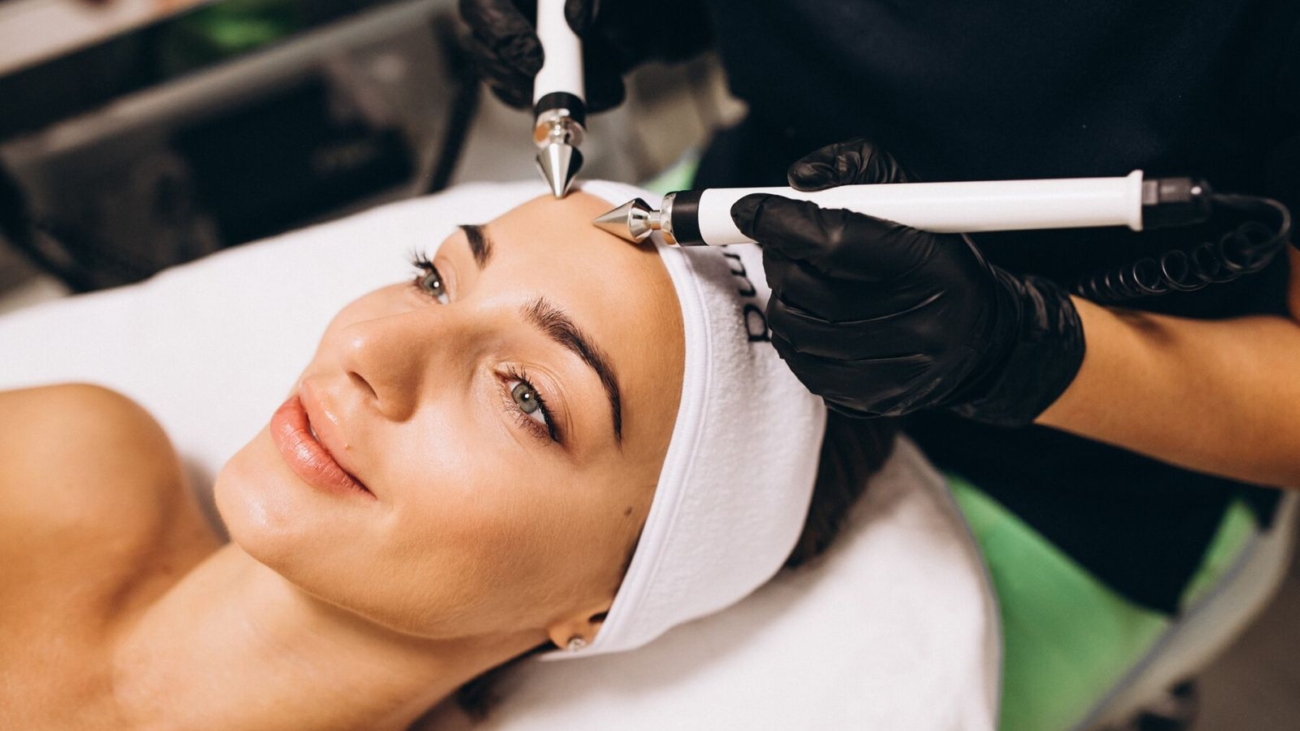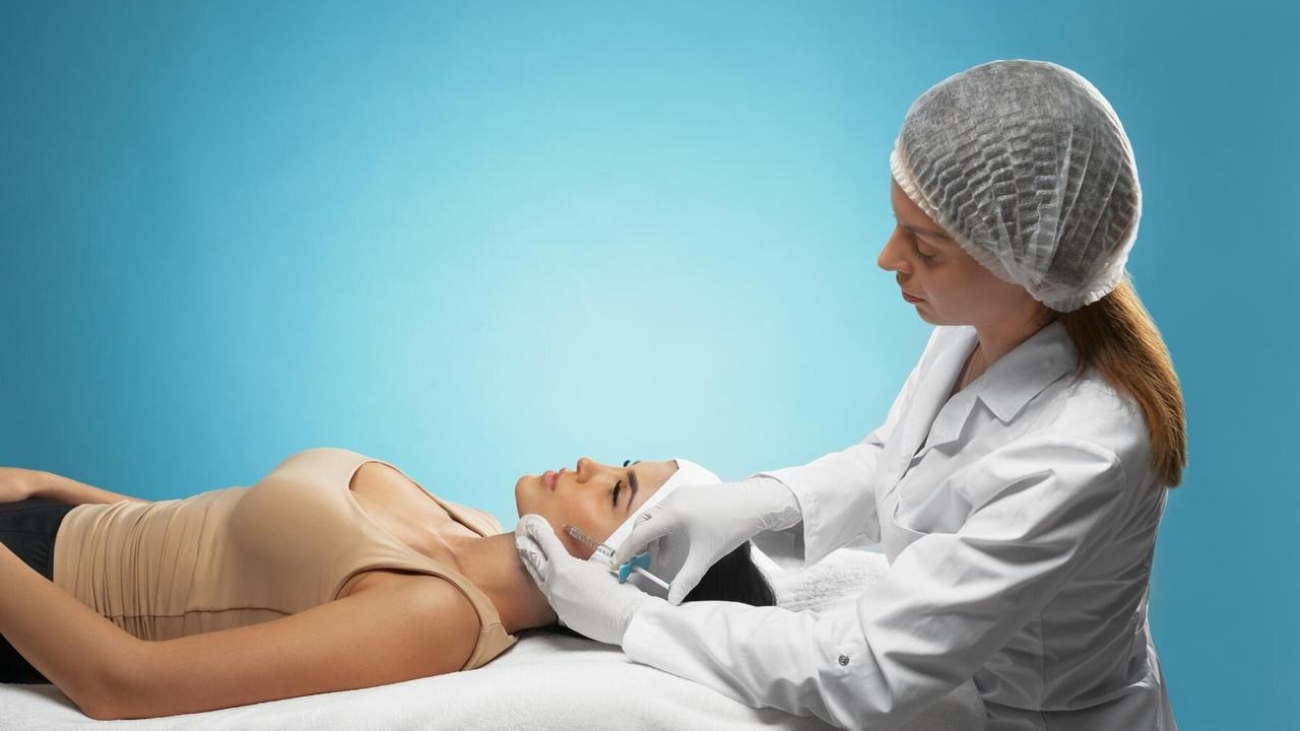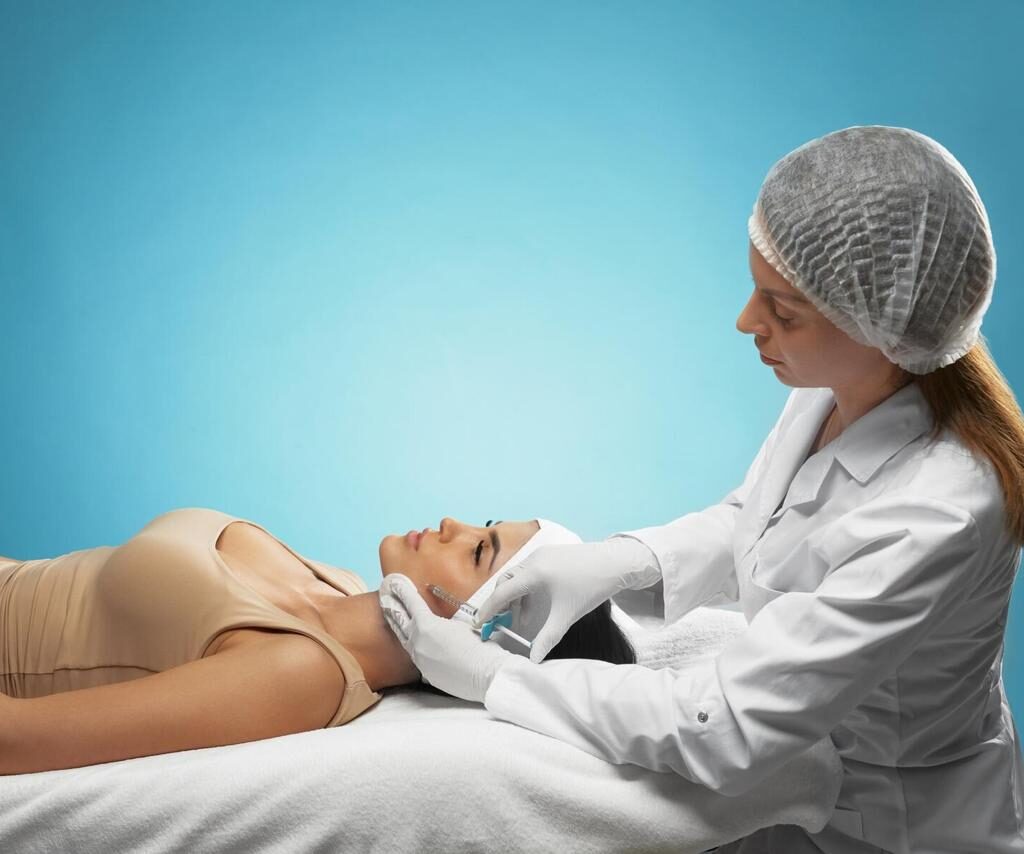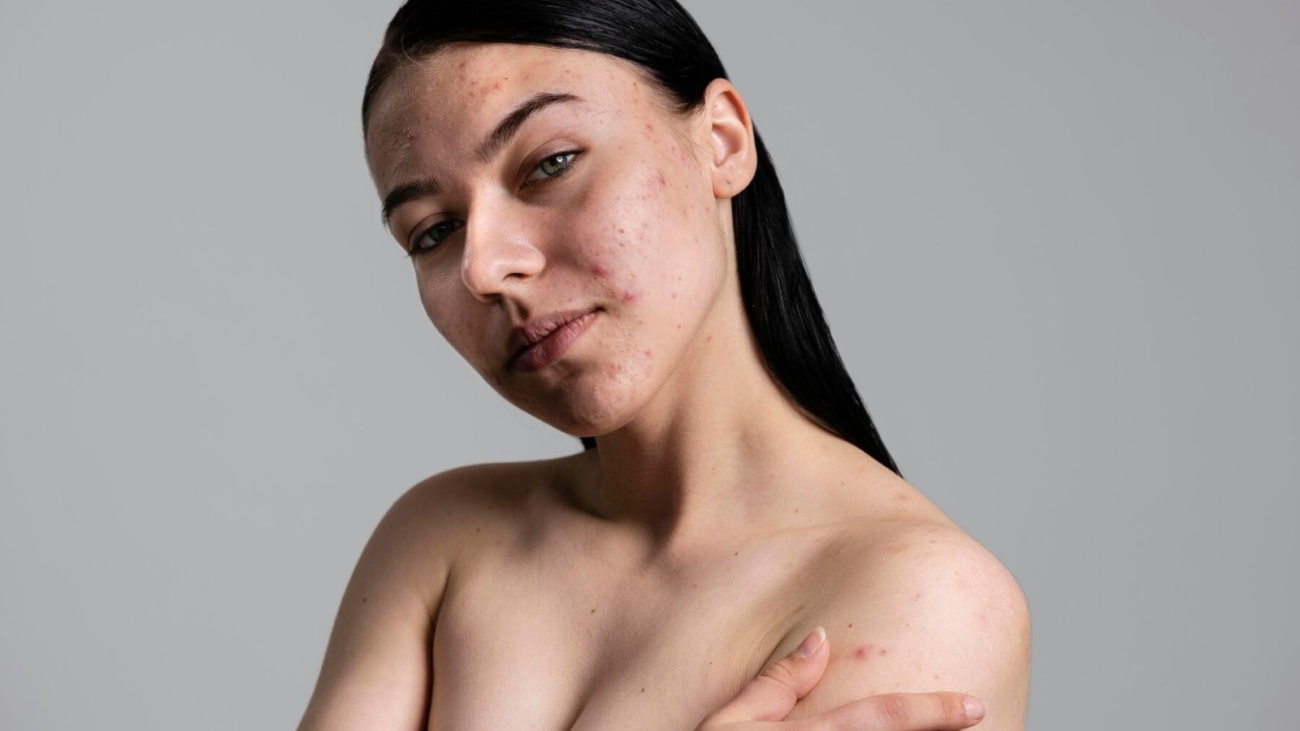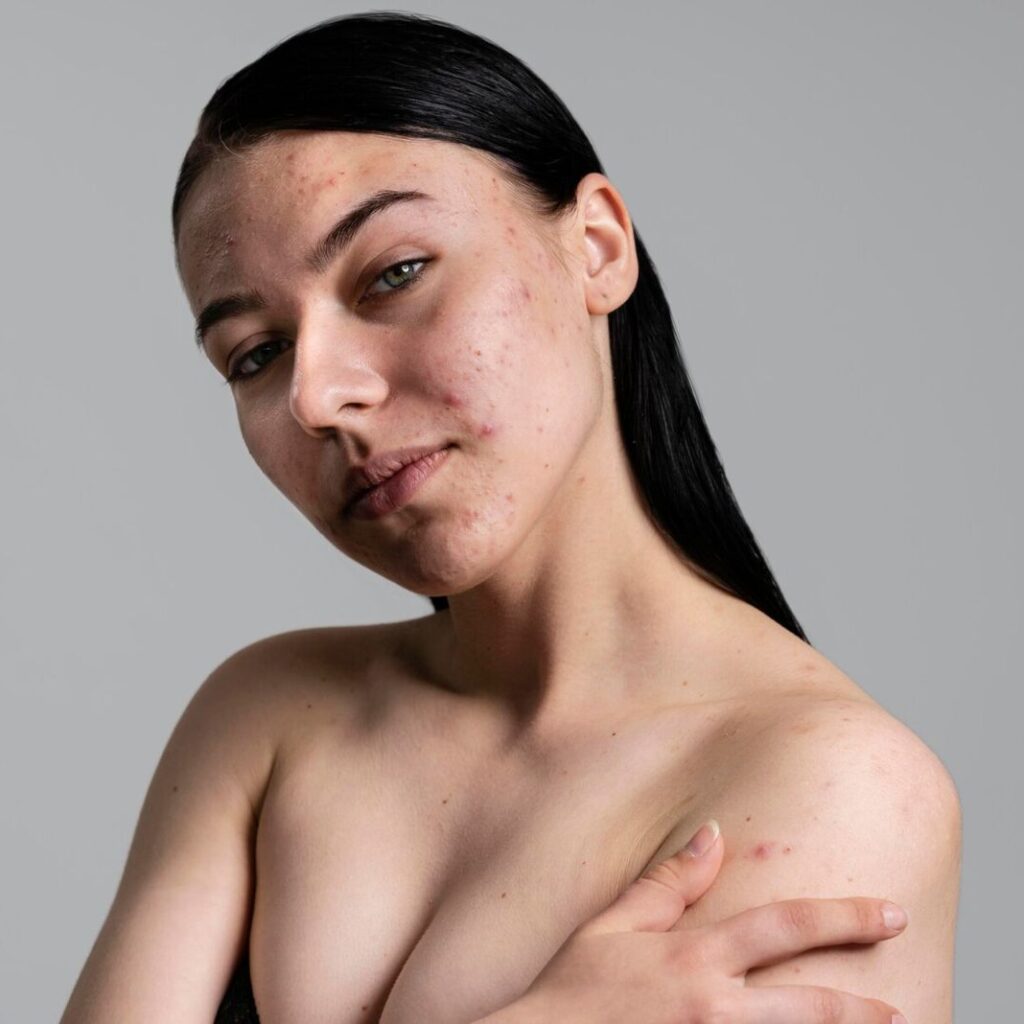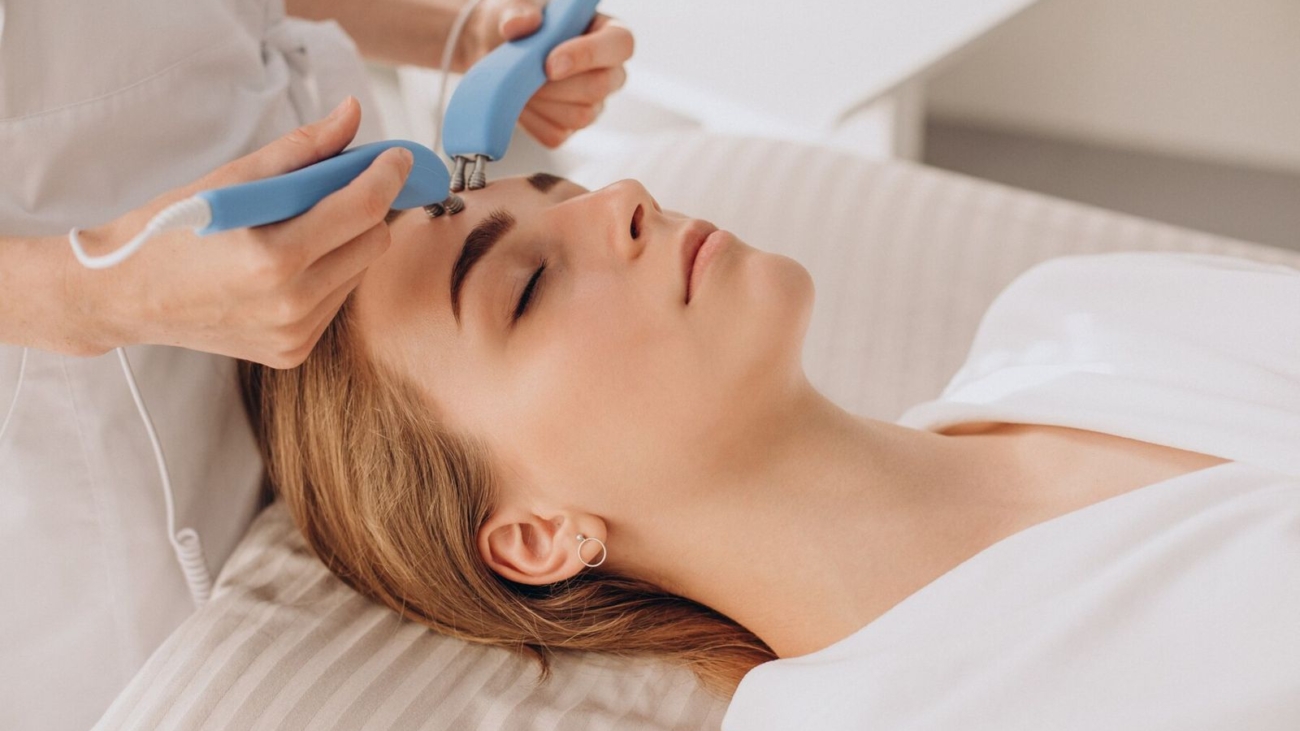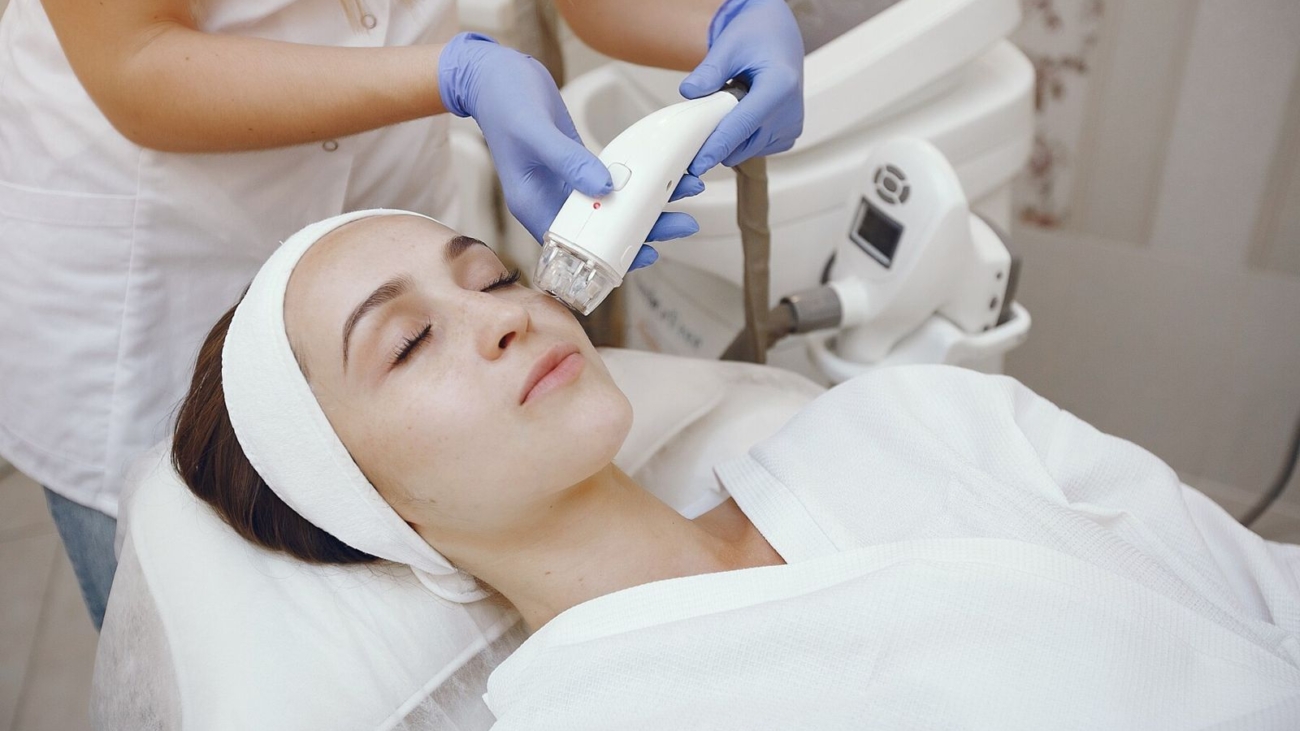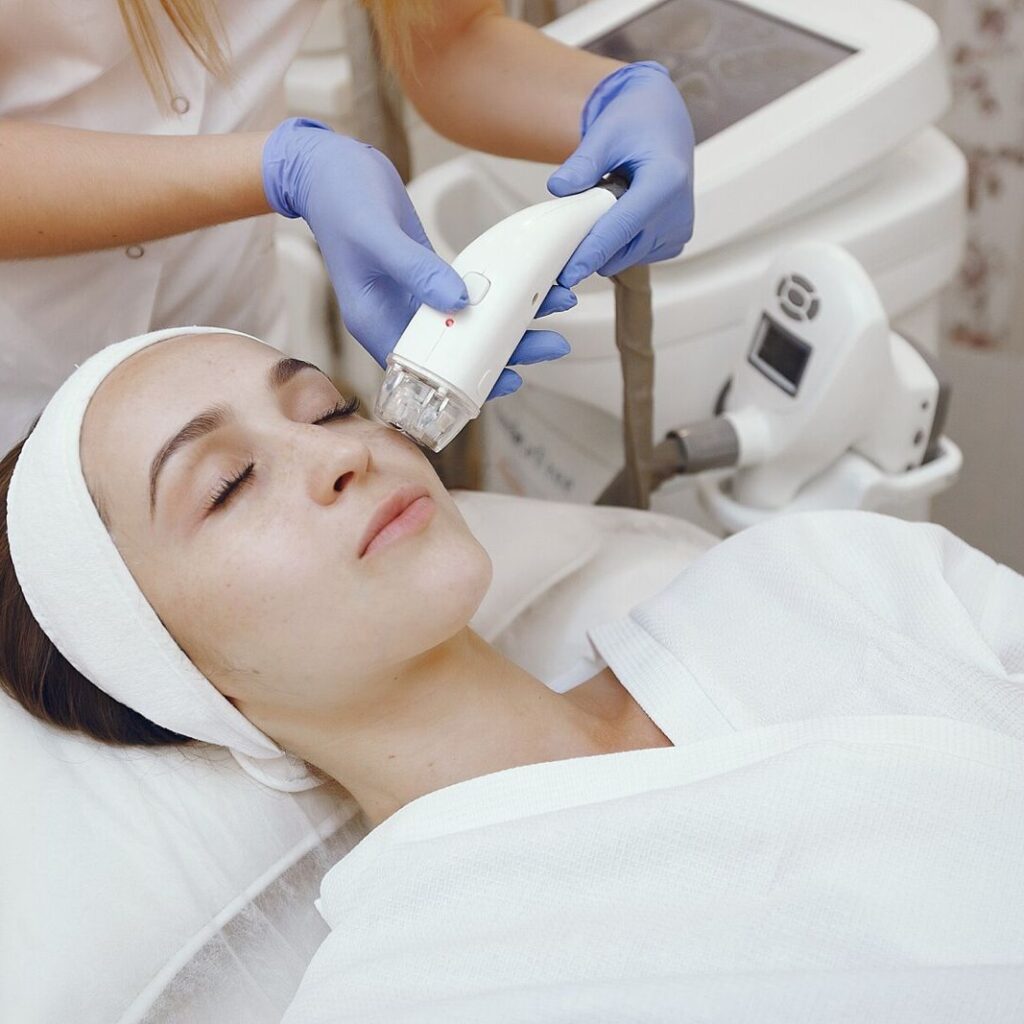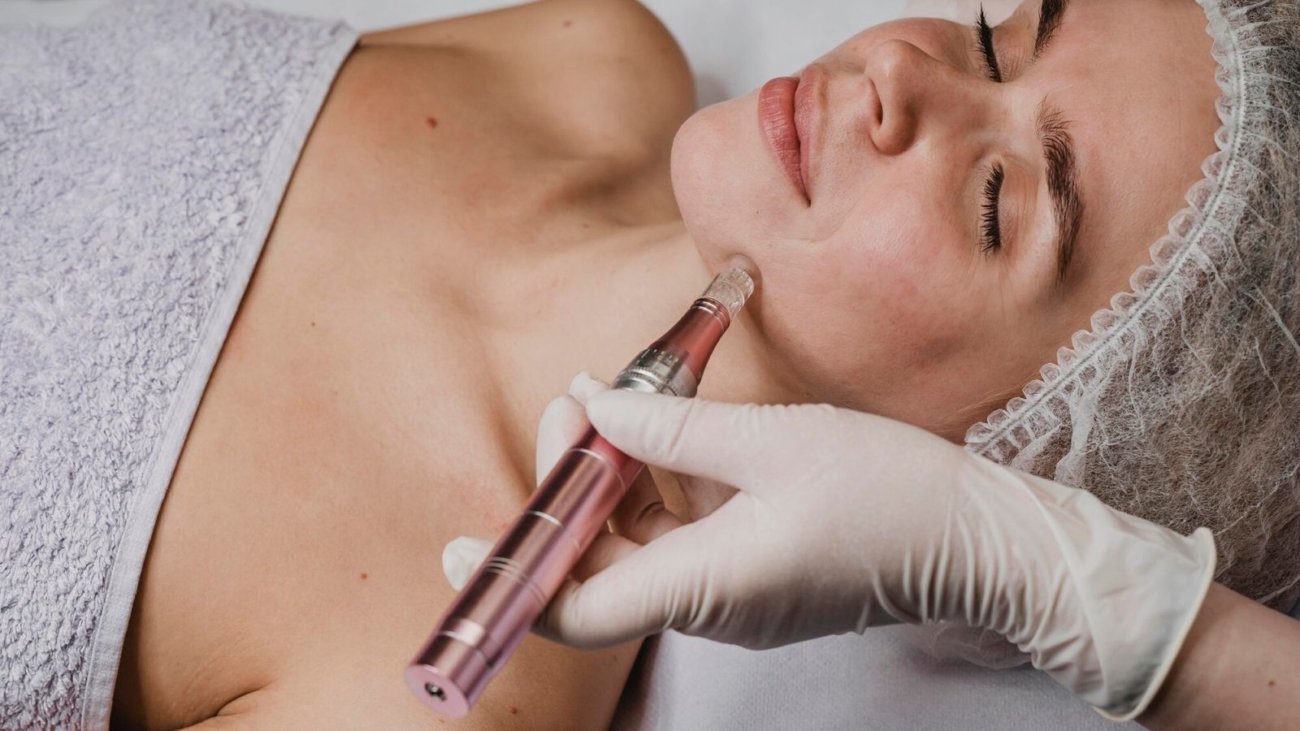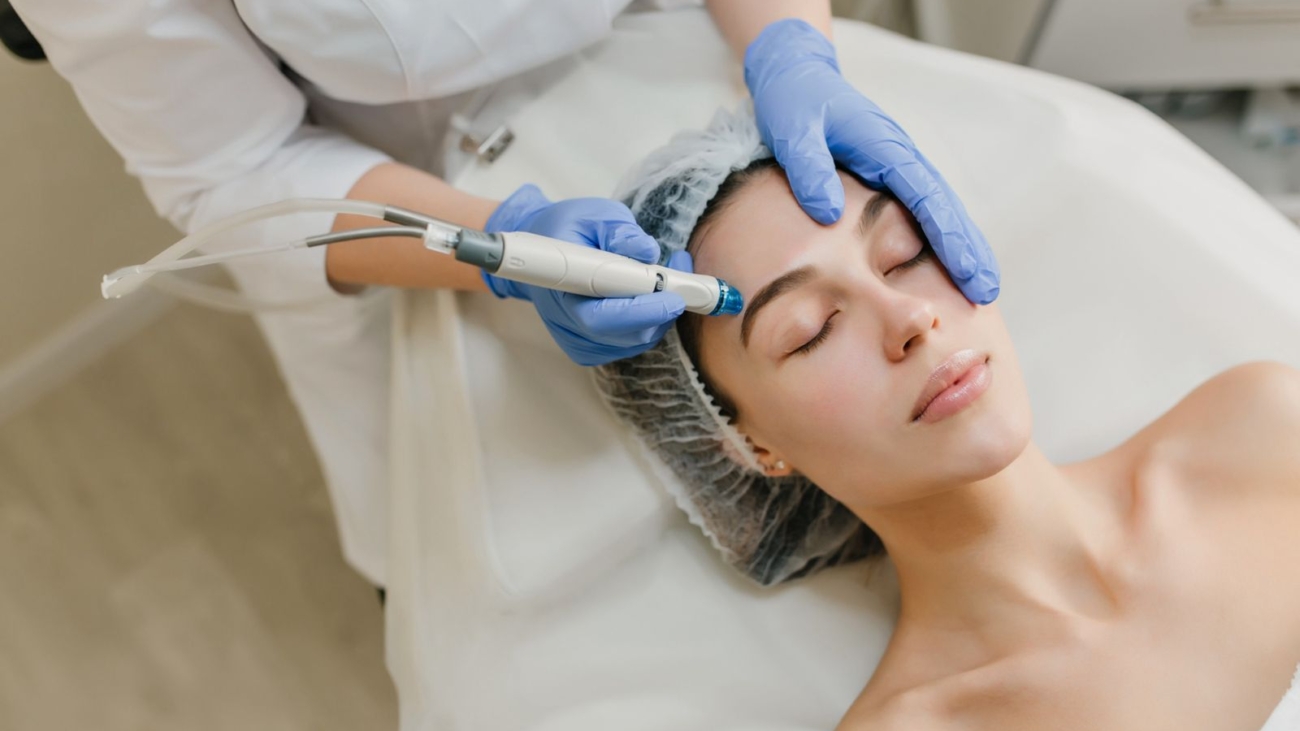In recent years, within the world of cosmetic and dermatological treatments, HydraFacial has often been highlighted as a leading treatment for deep cleansing and improving skin quality. This innovative procedure, which combines cleansing, exfoliation, extraction, hydration, and skin protection in a single treatment, has become a hit in beauty salons and dermatological clinics worldwide.
However, a key question arises: Is HydraFacial the ideal solution for acne and problematic skin? Can it be an ally in the fight against persistent pimples, oily shine, clogged pores, and uneven skin tone?
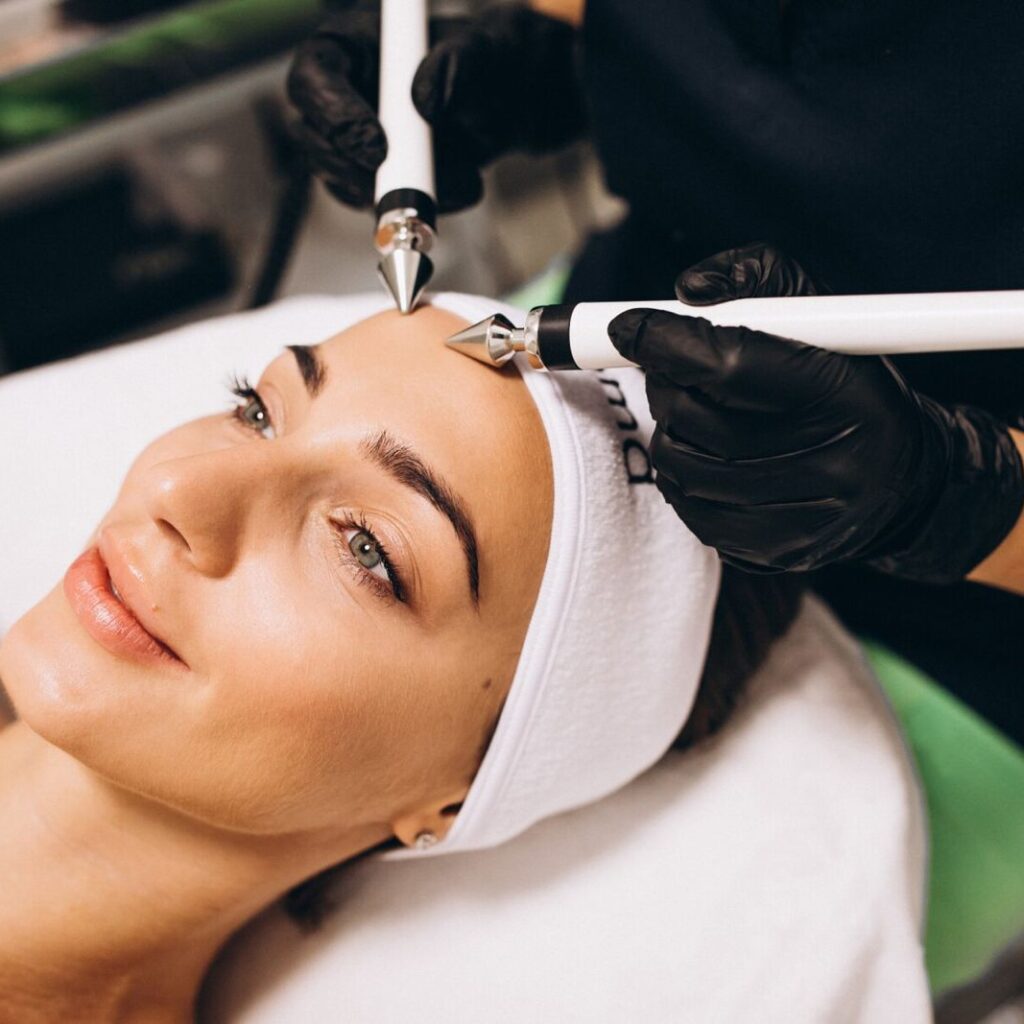
What is HydraFacial?
Let’s remind ourselves—HydraFacial is a dermatological procedure that uses a specially designed device for cleansing, exfoliation, impurity extraction, and intense skin hydration. This treatment combines multiple steps within one procedure, without the need for aggressive peeling or irritating chemical solutions that can make the skin red and sensitive. Instead, HydraFacial operates on the principle of vacuum extraction (using the patented ‘Vortex’ technology) and infusion of serums enriched with nutrients, antioxidants, and hydrating agents.
This synergy makes it exceptionally effective and suitable for a wide range of skin types and issues. Unlike many other procedures that may cause redness, tingling, or aggressive reactions, HydraFacial is relatively mild and painless. It is often called a ‘lunchtime treatment’ because it lasts about 30-45 minutes and does not require a recovery period—you can immediately return to your daily activities.
Is HydraFacial good for acne-prone skin?
The answer to the key question of whether this treatment truly helps problematic, acne-prone skin depends on several factors:
Pore cleansing and sebum control: The first step of the HydraFacial treatment involves removing surface impurities, dead skin cells, and excess sebum. One of the main causes of acne is the clogging of pores with sebum, dead skin cells, and other impurities.
Unlike traditional peels, the HydraFacial step is very gentle thanks to a special applicator that uses a water jet and vacuum extraction to remove these blockages gently, which can reduce the occurrence of pimples and blackheads. Vacuum extraction of impurities from pores without painful manual squeezing is a significant plus for those who fear aggressive mechanical cleaning or are prone to additional inflammation.
With regular HydraFacial treatments, pores can remain cleaner, and skin can be more balanced.
Reducing inflammation and irritation: HydraFacial is non-invasive and does not use harsh peels or aggressive chemicals. For acne-prone skin, less irritation means a lower likelihood of new inflamed lesions. In addition, hydrating and soothing serums used can help reduce redness and improve the overall appearance of the skin.
Individual customization: A dermatologist or beautician can choose serums and active ingredients that best suit your needs. For example, if the skin is oily and prone to acne, serums with salicylic acid or mild AHA acids can be used to further aid in cleaning and preventing new pimples. Anti-inflammatory and antibacterial ingredients can also be included to reduce existing inflammation.
Can HydraFacial completely solve the problem of acne?
It’s important to be realistic. HydraFacial treatment can help reduce the appearance of acne, blackheads, and oily shine, but by itself, it may not completely eliminate severe acne or acne caused by hormonal disorders, genetics, or other internal factors. For more severe forms of acne (cystic, nodular, persistent), a multidisciplinary approach is often required, which includes additional treatments, dermatological therapy, dietary changes, hormonal regulation, or even oral medications prescribed by a dermatologist.
In this context, HydraFacial can be seen as one of the useful components of a complex acne treatment, rather than the sole solution. By combining HydraFacial with proper home care, appropriate products containing salicylic acid, benzoyl peroxide, or retinoids, as well as with healthy lifestyle habits, the results can be significantly better.
How often should you undergo HydraFacial treatments if you have acne issues?
For acne-prone skin, the recommendation is to have HydraFacial treatments regularly, but not too frequently. The most common recommendation is once a month or once every 4-6 weeks, depending on the assessment and advice of a professional. Regular treatments can provide sustainable progress, as the skin is continuously cleansed of impurities, receives adequate hydration, and nutritious ingredients.
Potential risks and side effects
Although HydraFacial is known for minimal irritation and safety, every cosmetic treatment carries some risk. Possible side effects include mild redness immediately after the treatment, which usually disappears within a few hours. Rarely, individuals with extremely sensitive skin may experience temporary irritation, however, these effects are generally short-lived.
If you have active, open wounds or pronounced inflammatory acne, you may need to wait for your skin condition to stabilize before undergoing a HydraFacial treatment. It is always best to consult with a licensed dermatologist or cosmetologist to ensure that the treatment is tailored to your skin condition and needs.
Client Experiences
Numerous clients confirm that, after several HydraFacial treatments, they have noticed a reduced number of blackheads, less redness, and an overall improvement in skin tone. The skin appears fresher and more radiant, and pores are less noticeable. However, it is important to note that experiences can vary from person to person, as each skin reacts differently to treatments. While some may see improvement after the first or second treatment, others may need more time to notice significant changes.
Is HydraFacial the right choice for you?
If you have mild to moderate acne, blackheads, or occasional breakouts, HydraFacial can be an excellent option for maintaining clean, hydrated, and balanced skin. People with combination or oily skin can see significant benefits, as the treatment helps remove excess sebum and deeply cleanses pores.
On the other hand, if you are dealing with severe forms of acne, cystic acne, or post-inflammatory scarring, other therapies may need to be included. In such cases, a combination of medical treatments (e.g., topical or oral retinoids, antibiotics), lifestyle changes, and cosmetic procedures like HydraFacial can yield the best results.
Consulting with a professional who can assess your skin condition, recommend the best protocol, and, if necessary, combine the treatment with other methods is crucial for creating an adequate, most effective, personalized skin care plan.
